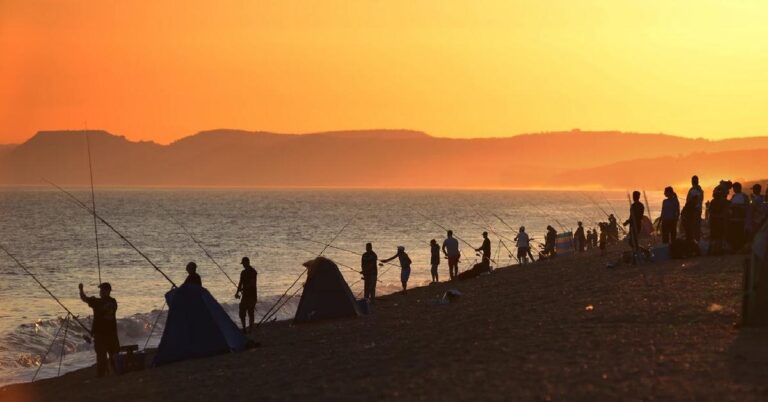Right. The story has been up for three or four hours without any other comments so I’ll kick off with the following. 🙂
And no. This isn’t me expressing a Bucket List wish exactly but having an inoperable prostate cancer diagnosis does tend to concentrate the mind regarding one’s own mortality so lets just say the following is something I just hope I get a chance to experience sooner rather than later.
I’m talking about a risky trek to a remote and sheer prehistoric cliff ledge somewhere along our West Dorset coast, accessible only from a lonely, desolate tidally locked stretch of beach and boulders where, in the past, giant fossilized starfish and other prehistoric treasures have been discovered half way up its cliffs.
With exceptionally high and low tides at the moment, I fantasize about exploring such an, otherwise, inaccessible part of my glorious Dorset coast by running the gauntlet between tides to reach Formation Rock, a prehistoric strata outcrop situated above the foreshore and beneath the foreboding but spectacular cliffs I regularly walk, fish and fly my drones from.
I’d better qualify things by saying that planning for this trek would be my second attempt to reach the area; a location that has become an almost mythical destination for me and one that currently exists only in my imagination.
Why? Because, although the area can be glimpsed from the clifftops or be imagined as hiding just out of sight in the far distance from my usual and favorite angling and drone photography beach locale, the reality is that the actual spot is a treacherous and extremely dangerous and time dependent one to navigate, reach, explore and then return home safely from.
The Challenge
From my local beach directly at the base of the cliffs, I will have to walk the several hundred yards along the shore until I reach the first finger of rocks jutting out at the western end. From there, walking parallel with a receding tide, I would then have to walk / climb around that headland, negotiate rocks and boulders (and sometimes patches of shingle and blue lias clay acting like quicksand) before continuing around a further couple of remote rocky headlands to arrive at my planned destination; all the while racing ahead of a tide that normally sees this whole coastal topography underwater, save for these slightly less dangerous fleeting spring tidal opportunities that manifest just a few times each year.
And if the tide or quicksand didn’t get me immediately?
There are the boulders.
They are the rocks that punctuate and inhabit these usually unseen shores. Domes of silky smooth eroded grey stone covered in a sheen of biological slime, about the size of a crash helmet and, crucially, often spaced about a size 12 boot width apart.
Perfect for capturing, anchoring and securing a human foot.
Becoming trapped in such a dangerous rocky scenario would not be such a great outcome with a spring tide rolling speedily back in. So Sure. Although it isn’t the same coastal location, the sentiments and circumstances of the near stranded individuals in the (Dorset Echo) news story hit a nerve and triggered the above text.
What about you. Do you have any On the Rocks anecdotes to share?
Incidently, For the record; No, I would’nt ever climb or actually disturb fossil bearing layers of rock even if I reached my fabled location one day and Yes, I would always expect and intend to go with company, carry a phone, let others know where I was going and do everything I could to ensure I didn’t use or waste the resouces of the brave folk who make up our emergency services.
PS. I called the location “Formation Rock” to spare its real identity!!!
14/07/2025



